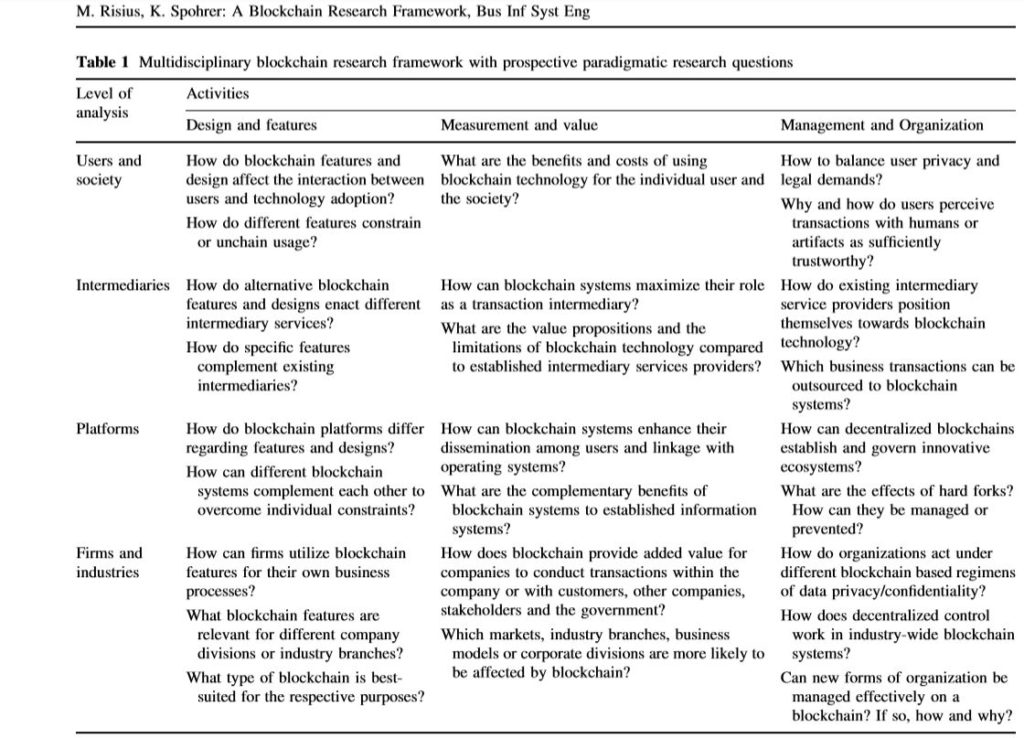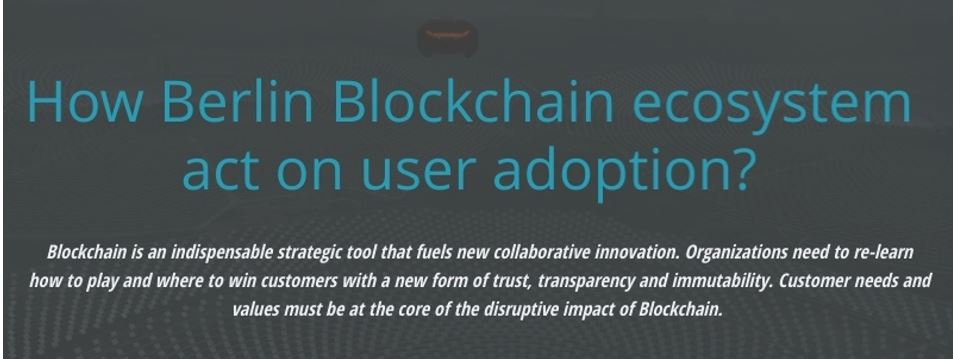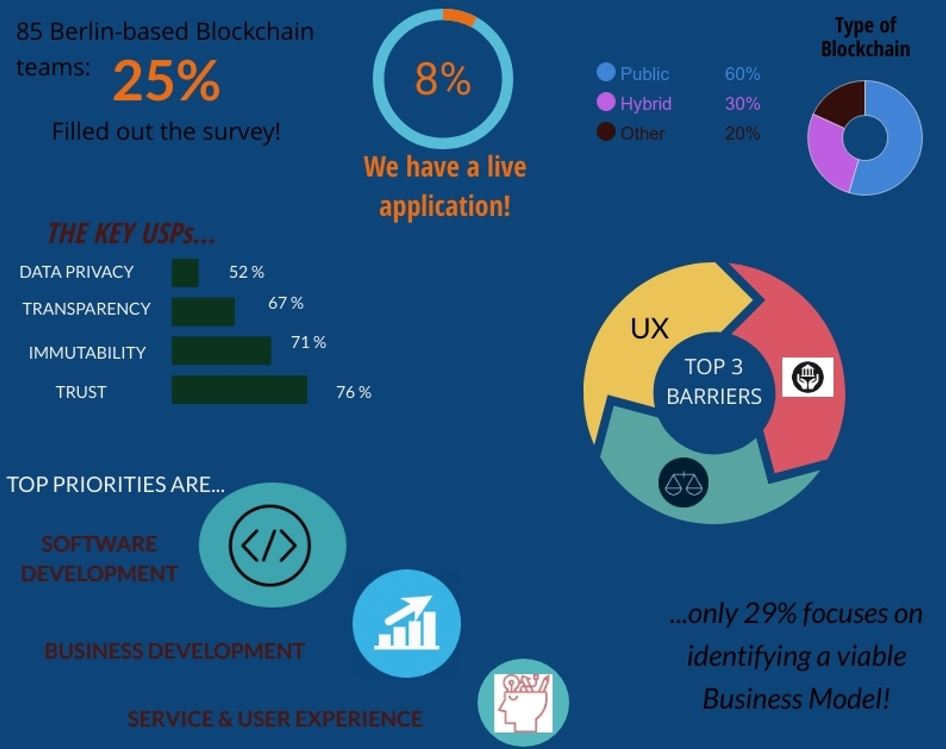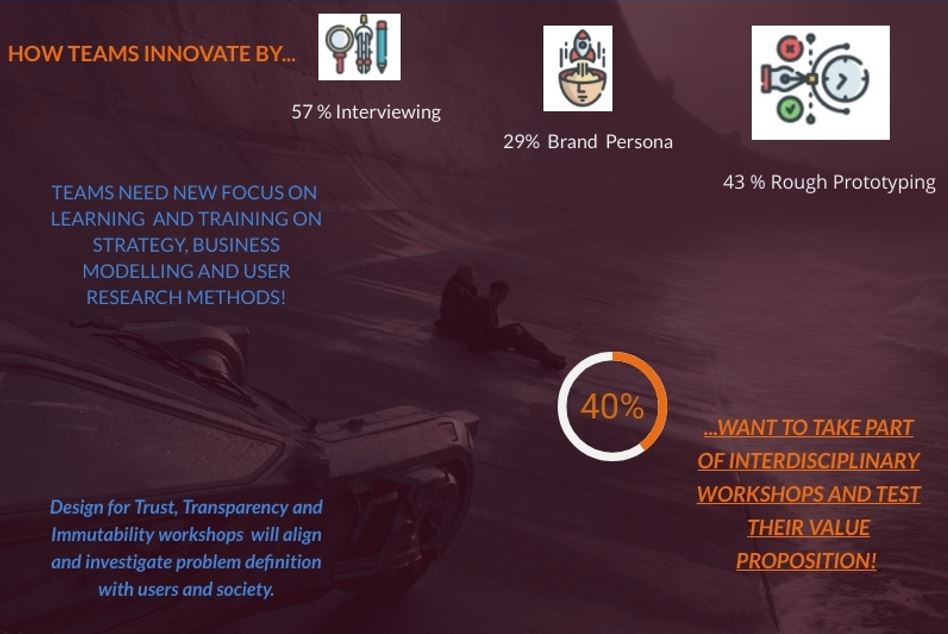Updated on September 16, 2020
Blockchain Service Design: Berlin User Adoption Survey 2019
Context
Since Room 77, a bar in the city’s hip Kreuzberg district, accepted the first bitcoin transaction for a beer in the summer of 2011, Berlin Blockchain ecosystem has kept growing. There are currently around 80 startups that utilize and develop blokchain as a core technology. However, throughout my last two years of experience in the space, this technology needs to address the user adoption challenge. Teams will have to stand up from the trough of disillusionment and reverse the lack of traction in Blockchain. In time of ambiguity and uncertainty, a culture of innovation needs to combine resources and experimentation to foster co-creation of value, with tolerance of failure. To unearth pains and gains in the blockchain value proposition, user research is the key.
Method
Between January and February 2019, the survey has been designed to assess how the Berlin Blockchain ecosystem act on user adoption. The survey’s framework is the result of a combination of action-research, quantitative approach and desk research.

The survey – launched in March 2019 – is the first step exploratory study with an open approach. It wants to reframe underlying values, concepts and norms to connect the end users with the Blockchain implications. Very little is known In the Blockchain user adoption, this project is to encourage and empower participants to take the lead and to shape their own narrative towards the users need with a Service Design toolkit.

Outcome & Insights
21 Blockchain start-ups answered the Blockchain Service Design survey.

Insight 1
The findings strongly show that trust, immutability and transparency are the top three attributes that start-ups consider to be key USPs of their blockchain products.
Insight 2
In terms of barriers, the two highest score show ‘Usability and user experience’ and ‘Understanding and alignment with legal regulation’.
Insight 3
The three core questions look for patterns on how teams apply tools and methods in their innovation process. The results highlight the need to develop and master more awareness of service design tools based on the users they are designing for and the complexity of the systems in which they operate: Value Proposition Canvas appears to be used only by the 5% of the respondents.
Identifying a viable business model is also another crucial strategic to anchor to their USPs.
There is a clear indication to equip the team with a more structured and dynamic tools to understand their users’ behaviours and needs. 8 teams are interested in being part of either Service Design program or interdisciplinary workshops. Trust, Immutability and transparency will be the pillars on which workshops will be delivered to train, improve service design tools and, to investigate pains and gains by generating co-creation with Blockchain teams and their users.
The Blockchain Service Design project is the results of , also, the collaboration with Gerrie Smits. We are constantly in touch to exchange ideas and methods to keep feeding our vision to facilitate the Blockchain user adoption.

